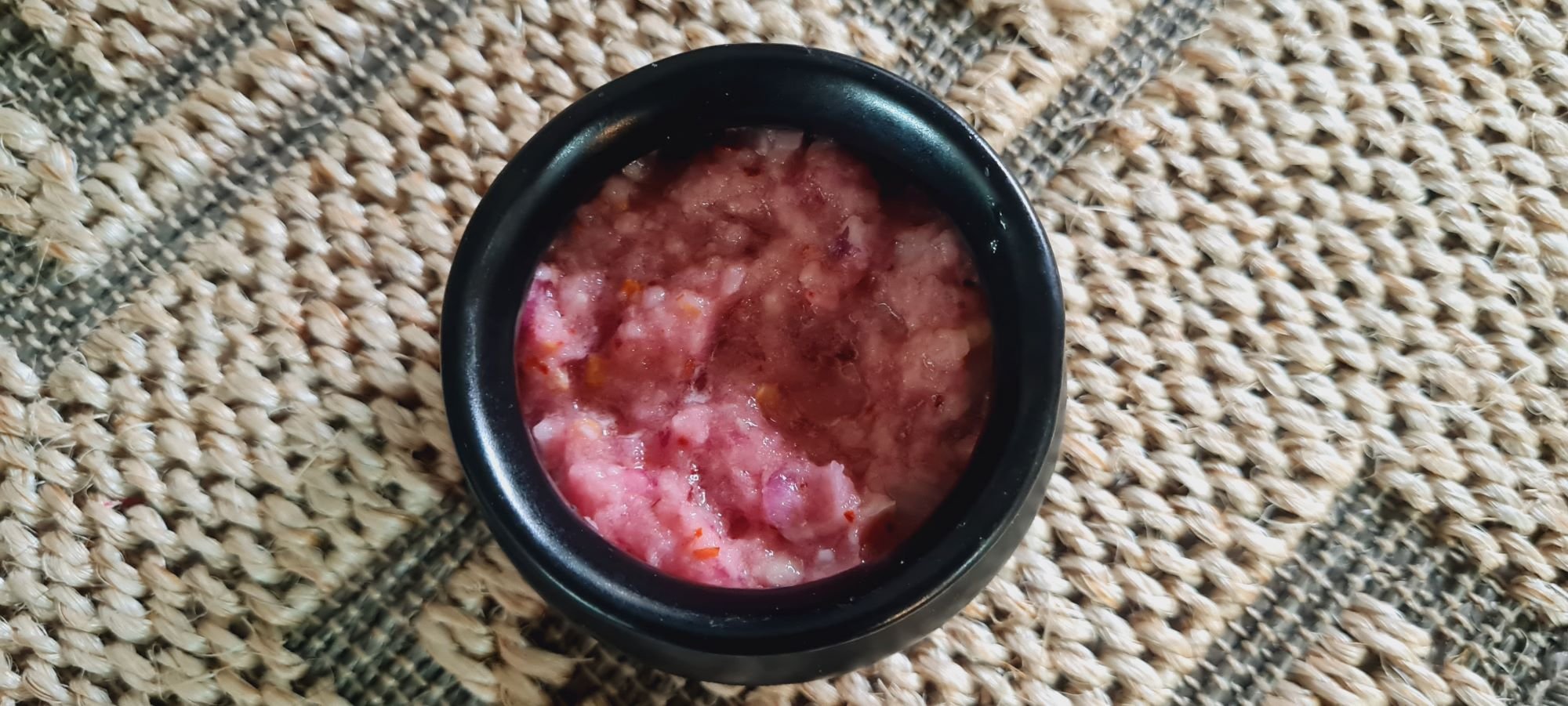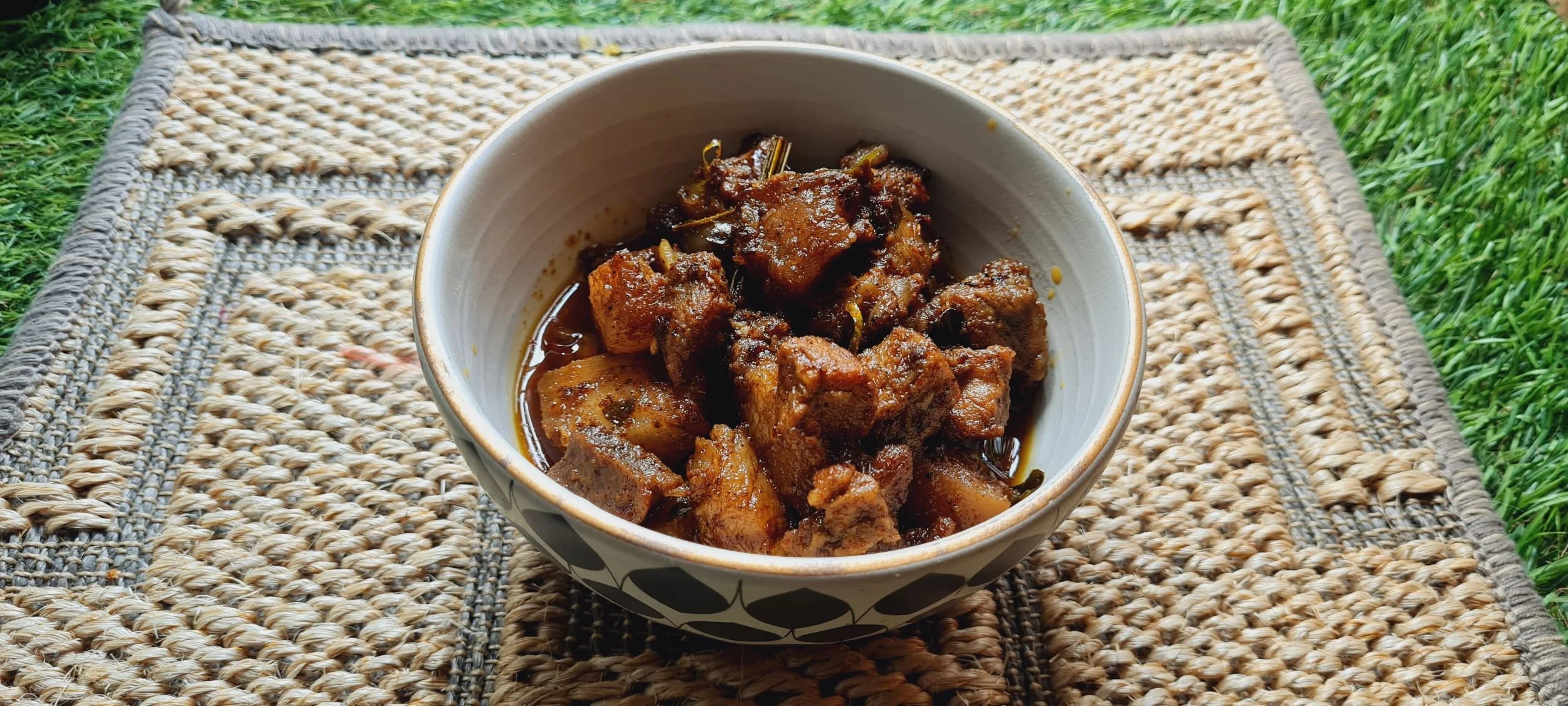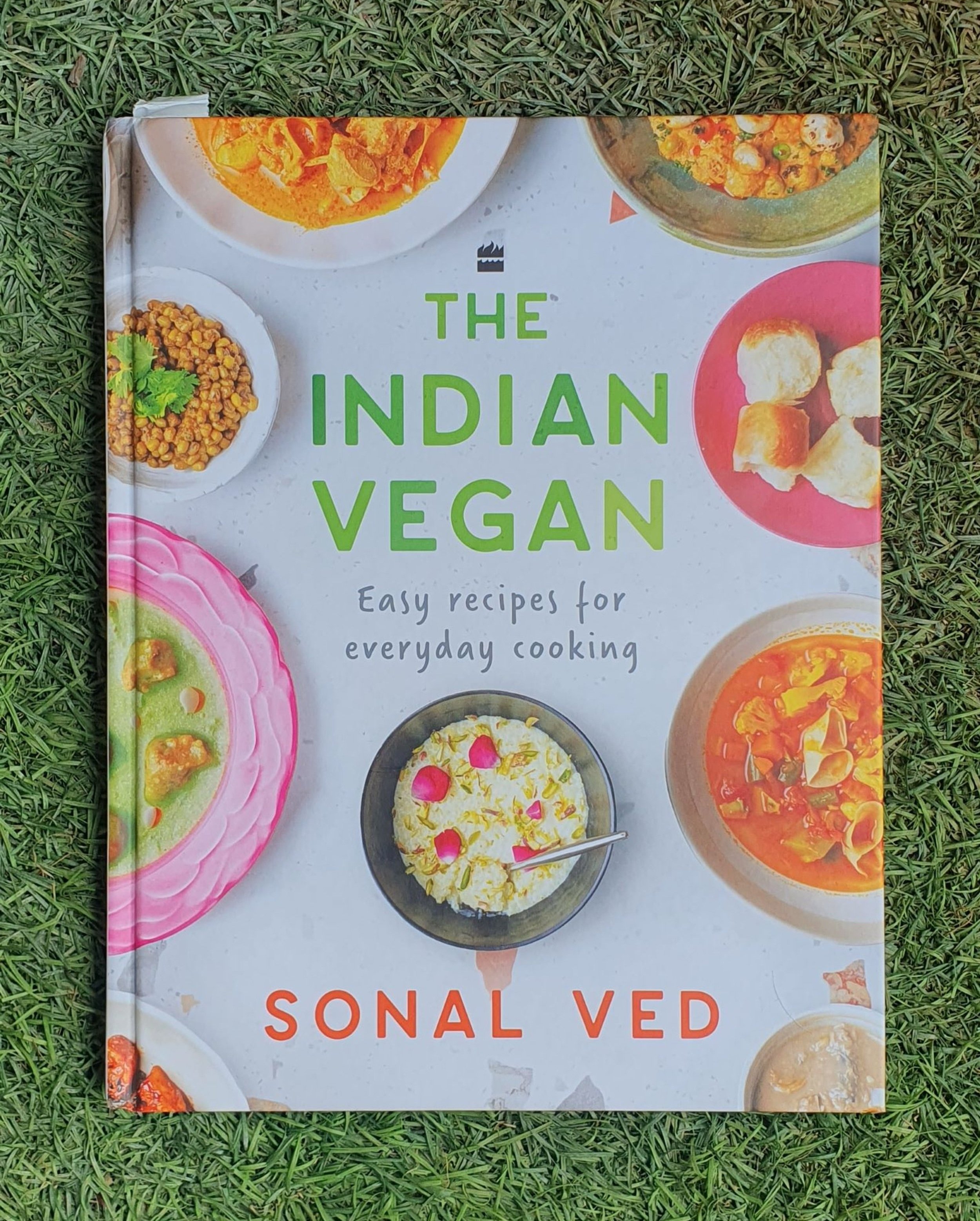What We Are Reading: Going Vegan & No-Waste In the Kitchen

The year has just begun, and if home-cooked meals are on your list of resolutions, we’ve got you covered. Ruth Dsouza Prabhu looks at five new cookbooks to provide inspiration for happy hours in the kitchen.
Deep Dive into Odisha’s Cuisine: Beyond Dalma
Living in Bengaluru, my only exploration of Odia food was at a restaurant in Koramangala called Dalma. Basic fare, but sans explanation. On a press trip to Puri to witness the Jagannath Rath Yatra, I sampled bhog and then prasads from surrounding temples and ate dishes like the Chana Potala, Khichdi, Dalma, Kheera, Mahura and more. I saw there was so much more to the region’s food.
Sweta Biswal’s Beyond Dalma is exactly what it promises — a wholistic foray into Odia food. The book is divided into 12 sections, corresponding to the lunar cycles of the Odia calendar, beginning with Baisakha (April-May) and ending with Chaitra (March-April). Across 177 recipes, Sweta looks at the role of seasonality in Odisha’s cooking. I was reading the book in January, so I cooked from the Pausa (December-January) and Magha (January-February) sections. The first was sikar jhul, a goat curry with minimal spices that came out delicious though I didn’t put in as much elbow grease into frying the base as Sweta recommended. And from the latter, piaja patra dia muga dali, moong dal with onion chives/spring onions, which was wholesome and hearty.
The recipes are easy to follow, without fuss and make you consider your pantry and its possibilities in a whole new way. There are several interesting asides through the book; Sweta examines how Odia cuisine fits into the core-fringe-legume hypothesis by Sydney Mintz and how it is the hallmark of established agrarian societies.
The book packs a lot of information, making it at once semi-academic, and a recipe book. It ends with a series of helpful lists — what to eat and not eat seasonally; food offerings made at rituals; various kinds of greens, fats, and vegetables used in Odia cooking; lists with combinations of dishes to make complete meals (though, page numbers would have made this more useable). And if I were to nit-pick, I would have liked to know which region each of the recipes were from, though to be fair, this does not take away from the volume’s heft in any way.
Beyond Dalma
Author: Sweta Biswal
Publisher: Notion Press
Rs 699/-
Sri Lanka – Eating in Technicolour: Jayaflava
There is something lovely about the way Jayaflava rolls off your tongue. The first thing that caught my eye about this Sri Lankan cookbook were the beautiful pictures. I love a good play with colour, and everything in the design of this book delivers on that front.
Author Tasha Marikkar’s introduction explains that Sri Lankan food is multi-cultural; minus politics and at the ground level, people come to each other’s aid through food. The book breaks down the country’s different communities, with a mention of the Veddas too, the last indigenous forest-dwelling tribes of Sri Lanka, now no more, though their food culture still has a stronghold in the country’s cuisine.
A helpful start to the book is a set of pairings that explain which dish goes with what, just as it is done in Sri Lanka. It is the section on short eats that had my mouth watering.
The chapter introductions and notes are peppered with Tasha’s experiences growing up in Sri Lanka. In many ways, it is also a travel guide. I can’t wait to find Happy Banana Bar at Unawatuna Beach and ask them to make Rajinda’s fish fry — stripped back kingfish, diced, deep-fried served with raw onions and generous squeezes of lime juice. This recipe gets an upgrade in the book.
Jaya Flava offers an introduction to Sri Lankan communities through their food
There’s a reference to dancing the baila — a Portuguese-Burgher influence that Sri Lanka shares with Goa, and consequently with Mangalore, my home town. I took Tasha’s suggestion and listened to Sunil Perera’s Piti Kotapan as I pounded away on the Lunu Miris — a chilli sambol from the book, and then worked on the Black Pork Curry, using the Indian kokum in place of the Sri Lankan goraka. Both dishes were wiped clean in one sitting.
I love that the spice categorisation at the end of the book is titled Spicylopedia. Almost every recipe tells you which community it represents, which is lovely insight. Look for the story of Greedy Andare when you pick up a copy of the book — and let me know if it made you smile.
Jayaflava
Author: Tasha Marikkar
Publisher: Harper Design
Price: Rs 1499/-
Sustainable Cooking: The No Waste Kitchen Cookbook
No-waste cooking is a recognised concept in Indian kitchens. Almost every cuisine and micro-cuisine in the country has a well-thought-out, delicious system of minimising food waste. This knowledge has been relegated to the back burner, but, with mindful eating and increased awareness of how the world is currently struggling to feed its people, this knowledge needs to make a comeback. It is books like The No Waste Kitchen Cookbook by Arina Suchde make for a great place to start.
The book has the simplicity of a Nancy Drew paperback, without any pictures. There are 75 recipes to choose from, split into easy-to-relate categories — makeovers of leftovers, skins and seeds, root-to-shoot, best before and the like. What makes the book an easy way to begin your no-waste journey is that it talks of leftovers and scraps of everyday Indian pantry ingredients like onion and carrot peels, fruit peels, leftover rice and dal, and more.
I had some spring onions on hand, in almost-ready-to-be-binned state, wilted and sad, and this book rescued them. Now, they’re sitting pretty in a glass jar as scallion dip, which my teen has all but finished with dumplings.
And, full points for the Boozy Bonus section, which feels like a well-done-you! chapter if you have worked your way through the book. It teaches you to make an orange whiskey sour with the citrus peel syrup recipe and a corn margarita with a corn silk infusion recipe.
A hat tip to Arina for taking this initiative of no-waste cooking not just to homes but scaling it up by working with restaurants and bars to help them minimise waste and maximise innovation.
The No-Waste Kitchen Cookbook
Author: Arina Suchde
Publisher: Harper Collins
Price: Rs 299/-
How to be a Vegan in India: The Indian Vegan
I admit I return to Sonal Ved’s Whose Samosa Is it Anyway multiple times over when I work on food stories — it shows research, is well-articulated in an easy-to-read and recall style. All of this is visible in The Indian Vegan.
First up, Sonal makes this a book about Indian vegan food, so if you are considering this lifestyle, it immediately becomes a relatable one. You will be surprised at just how many dishes in our culinary repertoire are naturally vegan. The cookbook has inventive recipes, showcasing the vast array of (everyday) dishes that India has to offer, all reimagined in a vegan avatar — Punjabi onion pakoda curry to Bengali dhoka’r dalna, the Rajasthani-Madhya Pradesh Malwa-style amli kadhi, Kerala’s ulli theeyal, Karnataka’s akki roti, Kashmiri chok wagun and more. The recipes go beyond the expected: think tomato salad in coconut broth and Roohafza falooda with coconut ice cream.
This cookbook highlights how Indian food can be vegan-friendly.
What sets The Indian Vegan apart is Sonal's approach to balancing traditional flavours with modern dietary preferences, weaving cultural context and personal anecdotes into each recipe. There are several vibrant photographs and sketches that capture the essence of each dish.
Whether you're a seasoned vegan or someone exploring plant-based options, this is a culinary adventure that invites you to rediscover the beauty and depth of Indian cuisine, compassionately and sustainably. It is not just a collection of recipes but, a celebration of the diversity, flavour, and ethical consciousness that has long since defined Indian cooking, traditional and contemporary.
The Indian Vegan
Author: Sonal Ved
Publisher: Harper Collins
Price: Rs 999/-
A Chef’s Story: Sweets and Bitters
Chef Satish Arora is a titan in the culinary world. A man who set the standards for star hotel gourmet offerings that continue to rule the roost to this day. He entered the kitchens of the Taj Mahal Palace in Mumbai as a wide-eyed boy in 1967, and even had his retirement deferred multiple times over, until he finally called it in 2016.
His story, beautifully captured by writer Chandrima Pal, is narrated in first person. The memoir will warm you: you instantly connect with the young Punjabi boy whose dreams of getting into culinary school were ridiculed; you feel his joy when he makes it into the hallowed kitchens of the Taj; you feel the pressure of shelling and deveining 200 kilograms of prawns as a rookie; and you smile at how flushed he is to cater to the beautiful Mumtaz of Bollywood. What stands out is that he is a man who never tires of learning, well and truly driven by passion.
Sweets and Bitters is a peek into the lives of prolific chef, Satish Arora.
The book is peppered with anecdotes: like the time he was escorted by uniformed men to get the freshest papaya for Indira Gandhi; or about Atal Bihari Vajpayee, who loved to make his own golgappas because it was more fun; and when the Queen of England commended him on a good meal served.
The book ends with a selection of Satish’s recipes like cannelloni Arora, idli chaat chatori, the JRD Club and more. The recipe I tried was in the chapter A Chutney Surprise. Satish applies his strong foundation in European cooking techniques to experiments with Indian dishes, and from that emerges a spicy, colourful spaghetti with green chilli, turmeric, paprika, spring onions garlic and coriander leaves in a tomato sauce. I winged it with the tomato sauce but it all came together well – international, yet very Indian.
This book is a delicious memoir, an insider look into the functioning of star kitchen, of the hard work and toil that continues to be an integral part of the hospitality ecosystem.
Sweets and Bitters
Author: Satish Arora as told to Chandrima Pal
Publisher: Bloomsbury
Price: Rs 430/-
Ruth Dsouza Prabhu is an independent features journalist based in Bengaluru, India. She has been writing on food for over a decade. Her work has appeared in Al Jazeera, Reader’s Digest, and Condenast Traveller, among others.
ALSO ON GOYA















